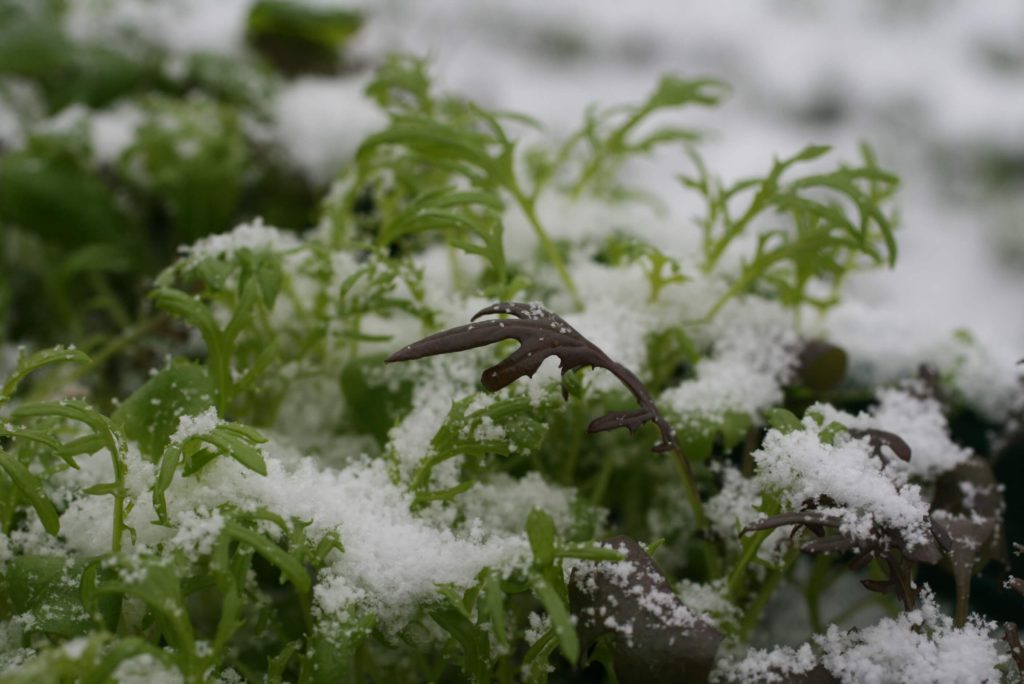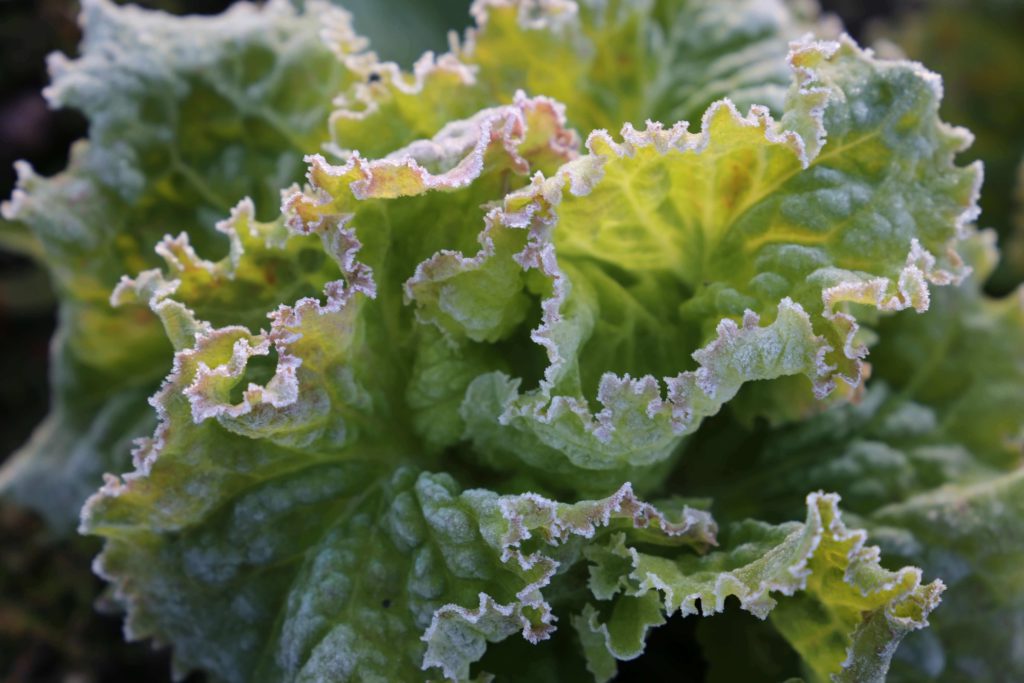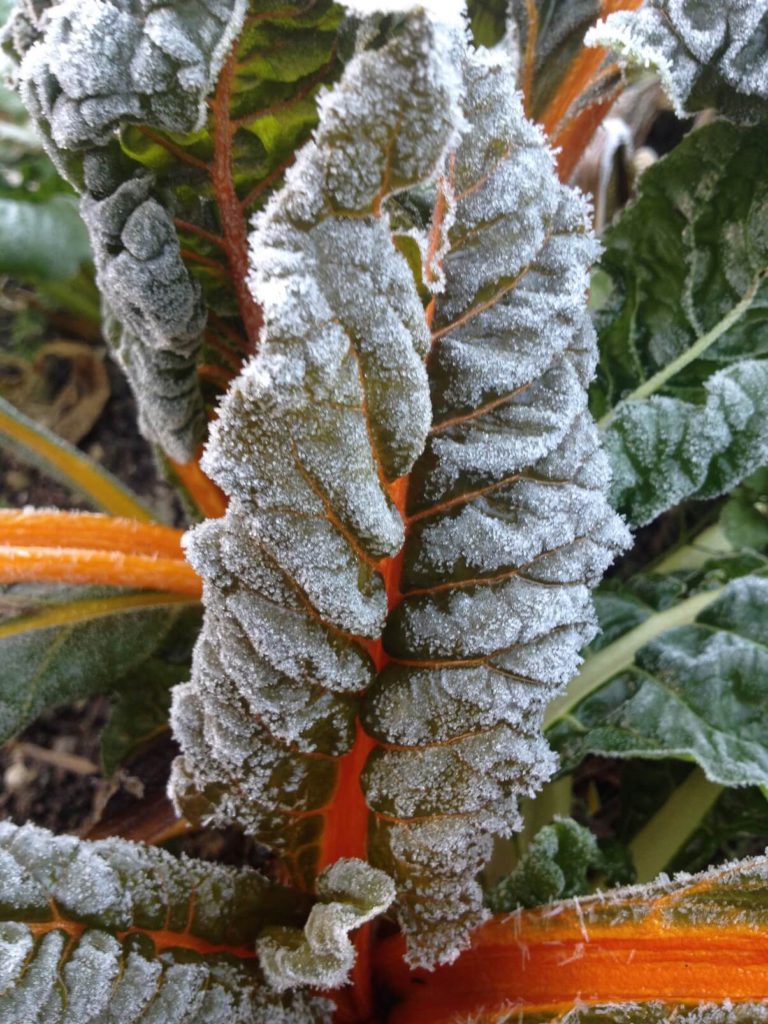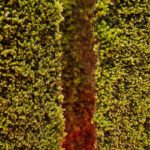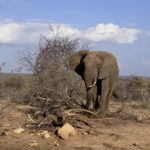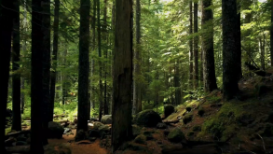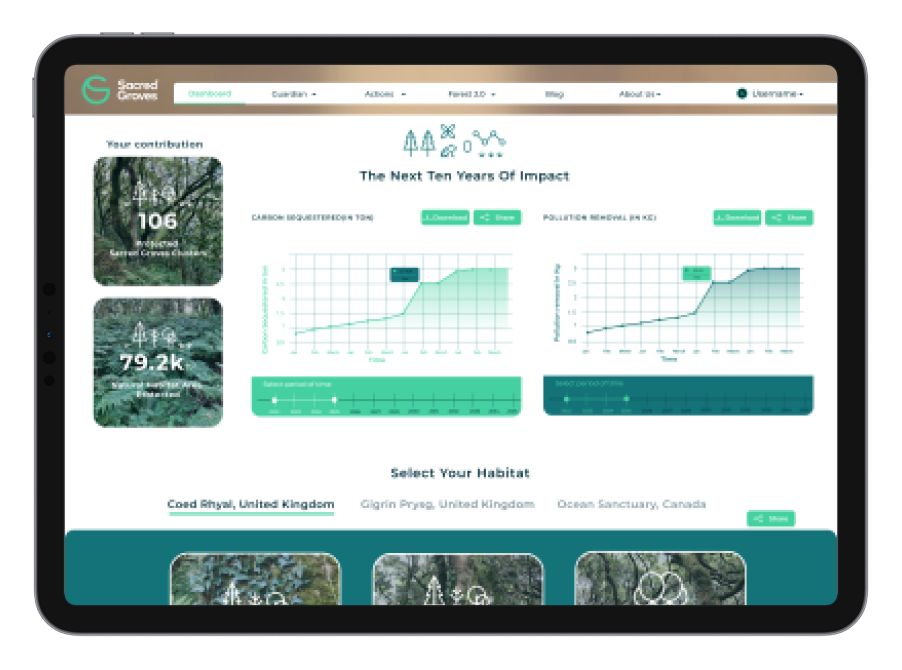Vegetable gardening in the snow sounds impossible, but an innovative Austrian agricultural scientist has shown that it’s possible to grow frost-resistant greens in his snowy winter garden. Wolfgang Palme’s ‘snow garden’ demonstrates that vegetable farming in the winter can offer communities sustainable options for fresh food and conserve the environment at the same time.
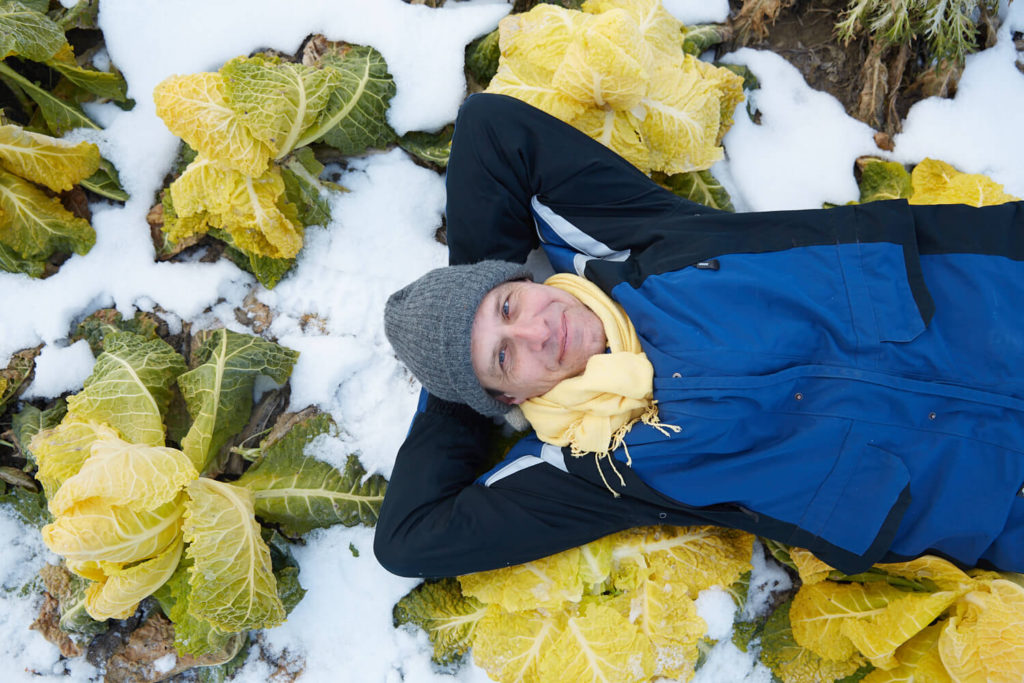
The tiny ice crystals on the dark green leaves sparkle in the winter sun. Wolfgang Palme breaks one leaf off the palm cabbage to eat. “It tastes nutty, elegant and sweet”, he says, smiling. An icy wind blows over the fields. Wolfgang Palme pulls up the zip of his weather jacket. The agronomist and head of the Austrian Research Institute of Horticulture has come to enjoy the taste of winter. The cold does not seem to harm the vegetables in his field. Chard, spinach, purslane, radish, turnips, leek, herbs and many species of cabbage are surviving undamaged despite temperatures falling far below zero on the day we meet. Nearby, in unheated soft-plastic tunnels, salads, carrots, celery or pea sprouts are thriving. Wolfgang Palme and his team planted them in late summer last year. Now it is the end of winter. There is still snow on the mountains around the Zinsenhof, an experimental farm between Linz and Vienna. But the vegetables are ready to eat.
It is a boon for his community, where in winter, fresh vegetable consumption entails buying produce grown in faraway, warmer climates. In fact, this is how most of Central Europe sources vegetables in winter. These, however, come with hidden costs. According to WWF Switzerland, a kilogram of asparagus flown in from Peru results in 15 kilograms of carbon emissions, compared to less than one kilogram had it been locally cultivated in the field. Green beans arriving from Morocco emit more than 30 times carbon than those that are locally grown. And what is available in winter locally is typically grown in heated greenhouses. “On a cold winter night, a heated greenhouse of 1.5 acres emits as much carbon as a detached house in a whole year,” says Palme, adding, “mankind can no longer afford this”. His innovative farming techniques balance the need to save the environment with meeting the consumer demand for fresh produce.
Palme has identified and published nearly 80 varieties of veggies which stand the Austrian frost. The idea of growing them in sub-zero temperatures came to him by chance. In an experiment, Asian salad greens were surprised by frost. But in spite of minus 11 degrees they remained undamaged. The technical literature had stated that they could withstand frost of only minus three to five degrees. “Fortunately, the lettuce had not read the literature,” he quips. This experience made him realise that often the growing conditions listed on seed packets, especially about how much frost they can bear, is not wholly accurate. So he redefined it.
With his work, the scientist wants to provide practical knowledge to other farmers. He is presently working with seven vegetable farms all over Austria. “Winter vegetables are good for small and medium-sized farmers,” says Palme. “They can be grown on land and soft-plastic tunnels all year round and save energy. Even in winter, they can offer fresh produce from their own cultivation.” The all-important question is how these vegetables manage to survive the frost. Palme plucks a lettuce leaf and takes a nibble. “Many vegetables form a kind of frost protection in their cells, which is made of sugar.. ” he says, through happy chews. “This is the reason they taste so good…”
Author: Klaus Sieg, The India Story Agency for Sacred Groves
Images Credit: Wolfgang Palme
Did you enjoy this article?
Share with friends to inspire positive action.
